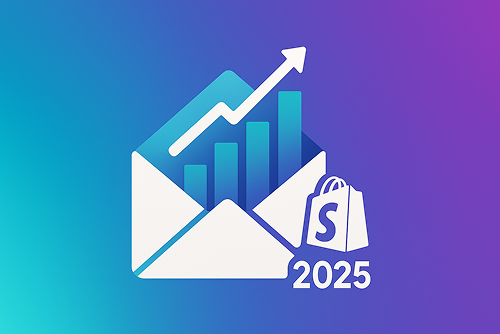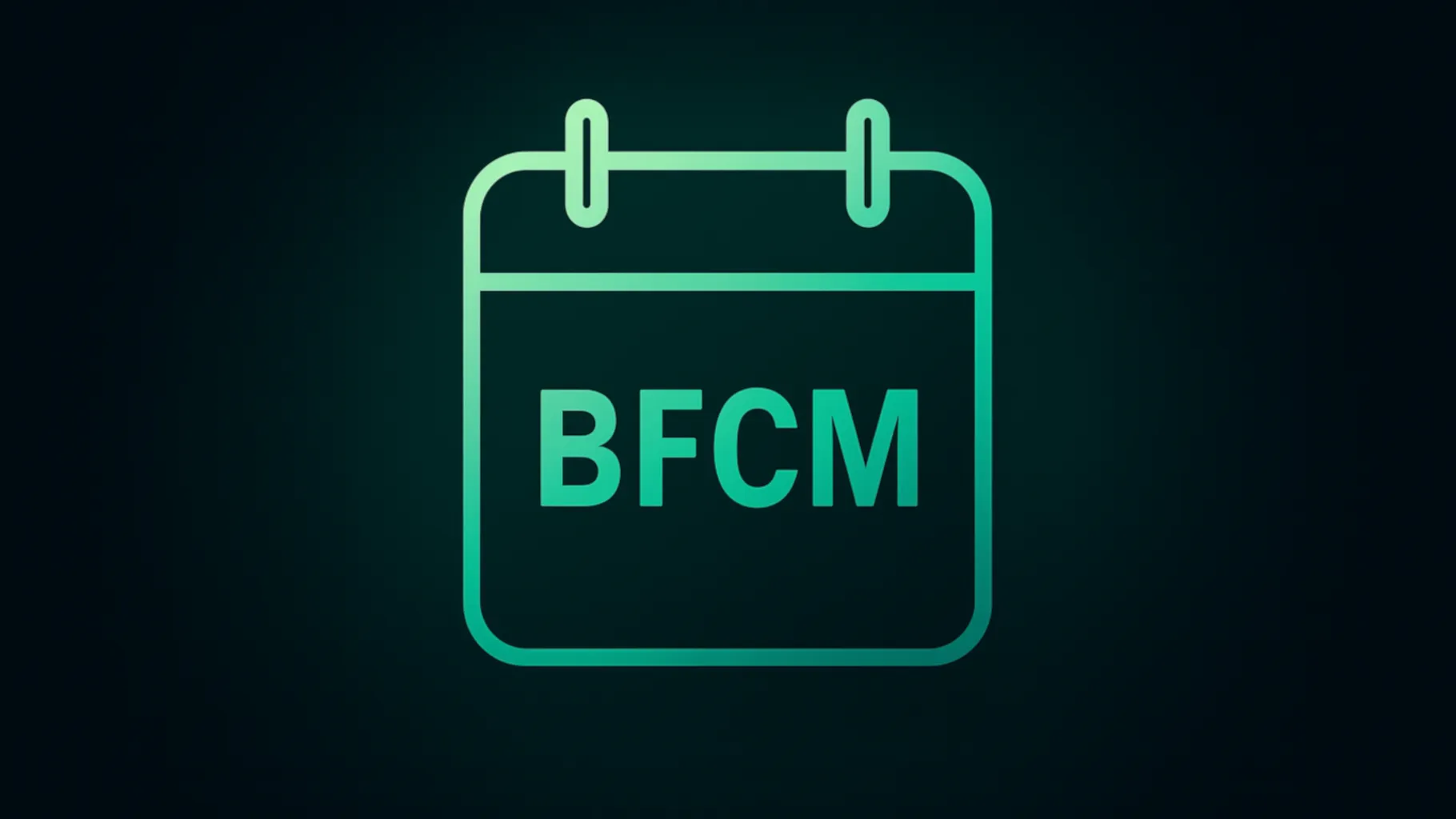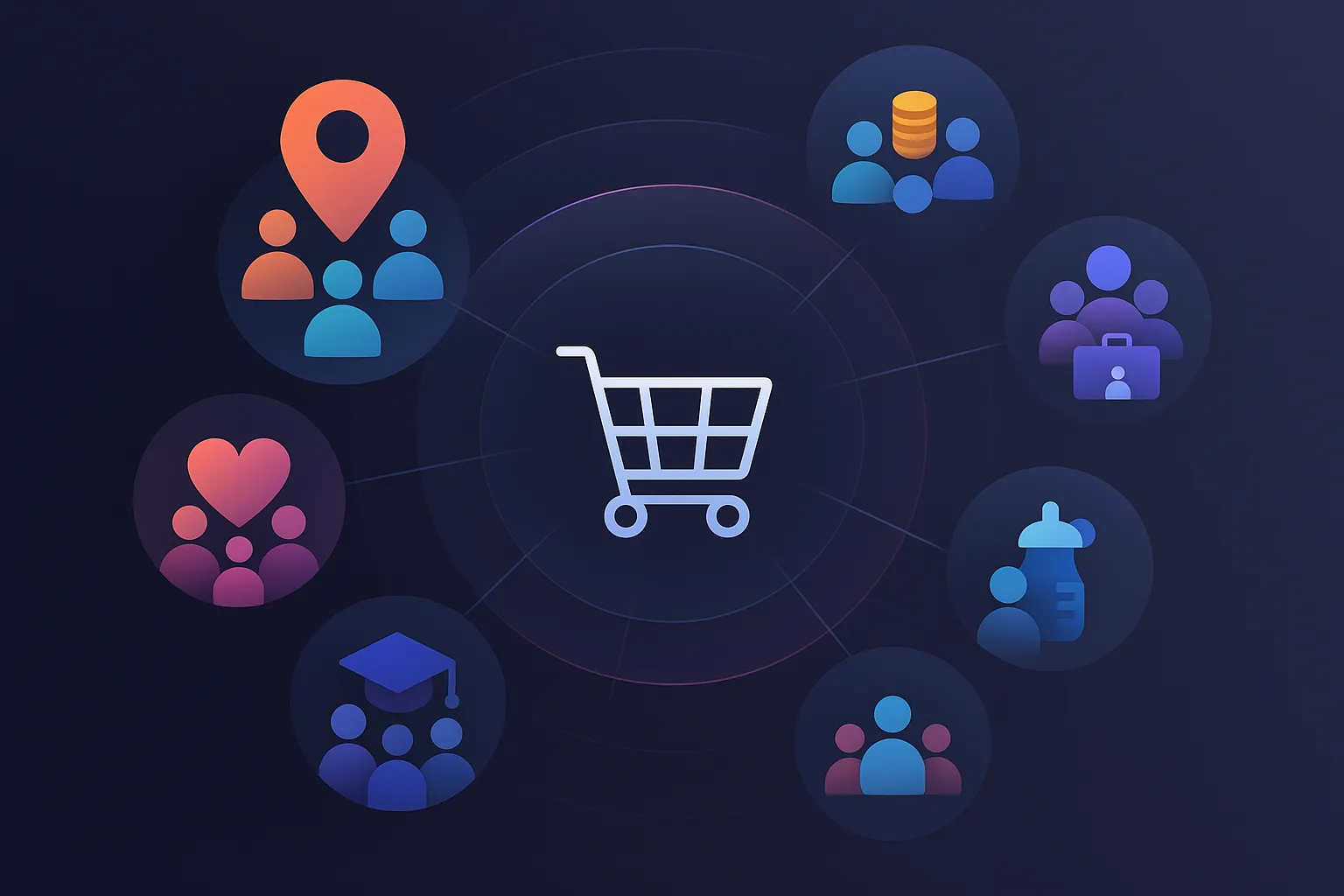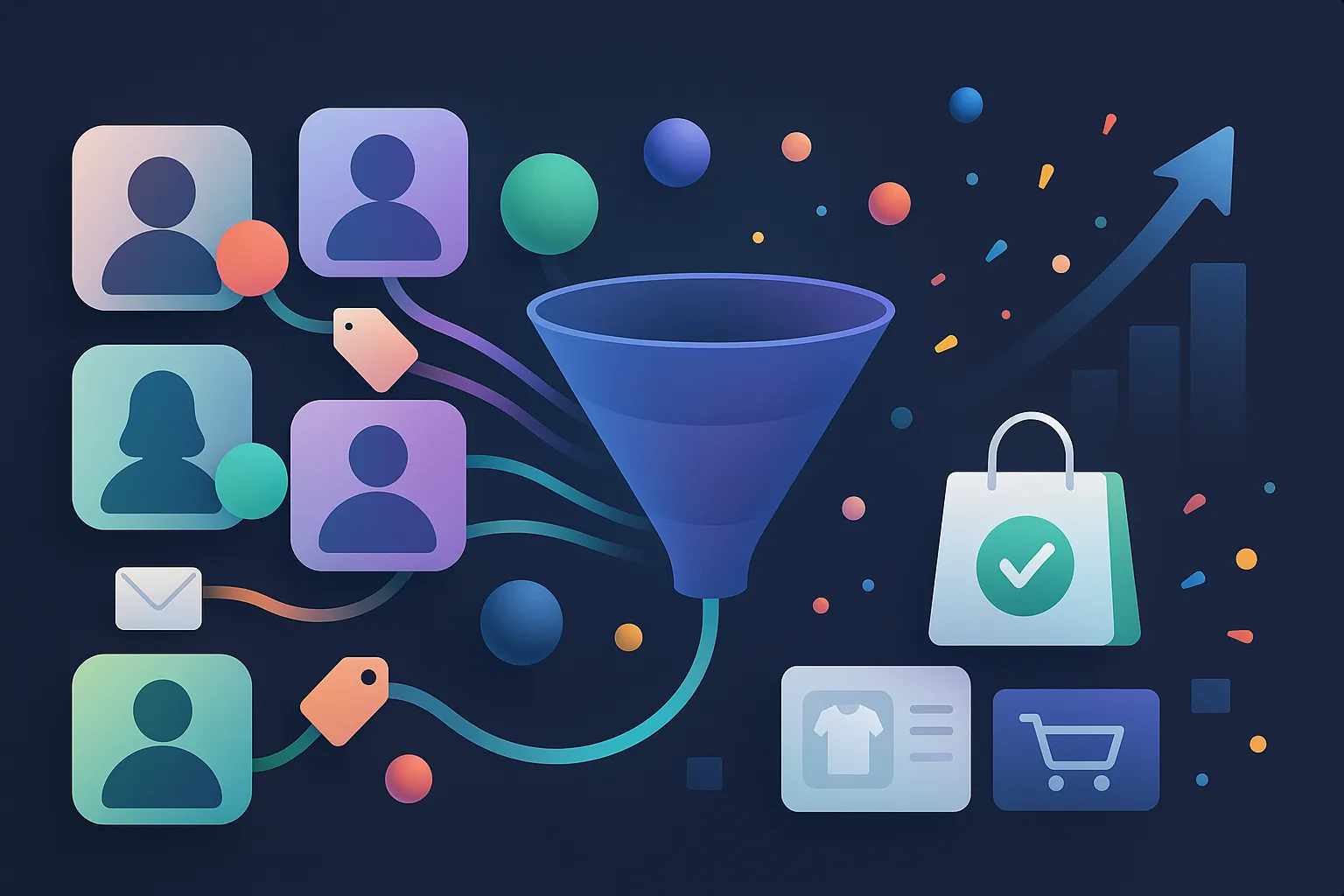One flagged ad. One community guideline strike. And suddenly, your store’s biggest sales channel is frozen.
When that happens, what’s your backup? For most Shopify brands, email remains the one channel that continues to work, while everything else is paused. Which is why, if you don’t have a strong email list, it’s time to build it so that for the rest of 2025, your Shopify store is not reliant on unpredictable algorithms and ad-related hassles.
In this email list guide, we will go over:
- Email list building strategies that work in 2025 (and the ones that don’t!)
- Tips for growing and nurturing your email lists
- Email list cleaning blueprints (and best practices for email hygiene)
- Mistakes to avoid while building your email list
Why Your Email List Is Your Most Valuable Marketing Asset
A high-quality, well-maintained email list can help you get the most out of your email campaigns and retain customers. Even if you use your email templates well and have your email marketing automations in place, they won’t perform well if your email list is not well-nurtured or is full of those random contacts who signed up after one giveaway.
And that would mean leaving money on the table. Why?
Email marketing campaigns have an average ROI of 36x, which means that for every dollar you spend, you earn $36 in revenue.

If that’s not reason enough, 65% marketers feel that email is the most effective channel for personalization when compared to social media, live chat, mobile apps, and SMS.
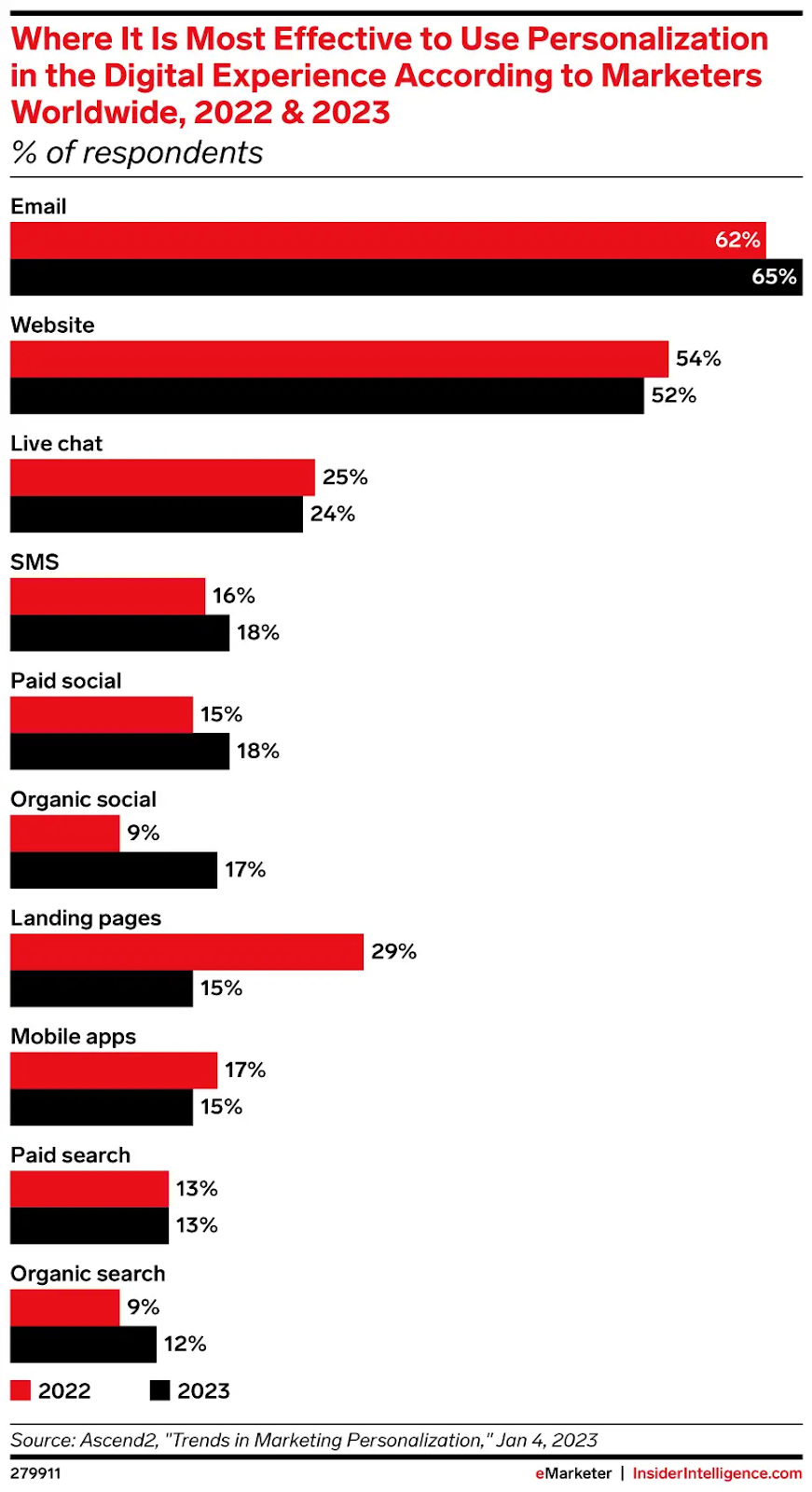
Furthermore, your email marketing list is the only “non-rented” marketing asset you have. Think about it: every other channel comes with gatekeepers. Algorithms change, costs rise, platforms disappear. But your email list? That’s yours. No middleman, no shifting rules. You have direct access to people who have chosen to hear from you. It’s one of the few places where you can build lasting relationships, nurture repeat customers, and drive consistent revenue on your own terms.
Email List Building Strategies That Work in 2025
Most e-commerce brands do not need a longer email list. They just need to build a better one. Here’s how to build an email list from scratch with high-quality contacts:
Asking for Consent
Obtaining permission from your email subscribers through a straightforward opt-in signup process is the best way to ensure your email campaigns reach the right people, i.e., those who are genuinely interested.
You can have a long email list, but if the contacts on it are unaware of their inclusion, they are no better than cold leads; you risk spamming them. Your sender reputation will decline, and there’s a risk of violating data privacy regulations, which are based on consent-first principles.
Providing Relevant Incentives + Helpful Lead Magnets
While asking for consent to add a potential customer to your email list, give them something in return. This could be a targeted offer, such as a discount or exclusive access to a product. It could also be a grant of membership to your e-commerce brand’s loyalty program.
Your lead magnets are an extension of your brand, so make them relevant to your product and valuable for your target customer, whether it’s a free product, a tutorial, or a checklist.
Your non-discount related lead magnets are an extension of your brand, so make them relevant to your product and valuable for your target customer, whether it’s a free product, a tutorial, or a checklist. Here are some examples:
- Free Tools: Any interactive tool that helps the customer make a decision related to the product (regardless of whether they should buy it or not) can show them that you understand their needs. If you own a skincare brand, a free tool could be a skincare routine generator or a skin type quiz, both of which give personalized recommendations. If your Shopify store sells pet food, then a pet food calculator based on the customer’s inputs about their pet’s breed, age, weight, etc, can be a great way to get more customer insights, while also giving them something valuable in return If you run a fashion brand, then a “Find your style” quiz will work too!
- Templates and checklists: If a downloadable resource helps the customer without trying to push a sale, that customer will trust you more. So, for example, if your Shopify store sells anything related to food or beverages, recipes and shopping list templates can be super helpful. Perhaps you sell organic clothes, then a customer will appreciate a starter kit on how to systematically audit their wardrobe if they are just getting into giving up fast fashion. An AM and PM skincare checklist can also be a useful lead magnet if you run a skincare brand.
- Events and community-building activities: Inviting potential customers to pop-up events or online seminars that will educate them about topics of interest is also a smart way to build your email marketing list.
Asking for the Right Information for Email Segmentation Later On
When you are gathering information from new subscribers, start with the email. But beyond that, try to obtain demographic information, likes and dislikes, any specific concerns or worries they may have that your product can fix, and so on. With this information, you can segment your email list based on valuable parameters and fire off email campaigns according to each segment.
Using Smart Pop-Ups
Not all pop-ups are annoying. What’s annoying to a customer is bad timing.
Using timing logic, like exit-intent, scroll-triggered, or “second-visit” pop-ups, lets you meet customers when they’re most open to signing up, not while they’re still figuring out what you sell.
Pro-tip: Here’s what Sowbagya Lakshmi, PushOwl’s Senior Customer Success Specialist, tells our Shopify clients to do to make the most out of pop-ups:
- Experiment with different kinds of timings in relation to other marketing channels: It’s best to show the email pop-up after the web push notification, somewhere after 20-30 seconds for best conversion rates
- With PushOwl and Brevo, you can display pop-ups based on the time someone spends on a page, so use exit-intent pop-ups and scroll-depth based triggers to increase conversions.
Creating Dedicated Landing Pages
Pop-ups help convert site visitors. Landing pages help convert even those who haven’t landed on your site yet.
Dedicated email signup pages give you a clean, focused space to pitch your offer without distractions. No menus, no product links, no noise. They also make attribution easy. You know precisely where your subscriber came from and what message worked. It’s a great way to scale list growth without relying on homepage traffic.
You can use Brevo’s landing page tool to build an intuitive design, or select one of the many Brevo templates.
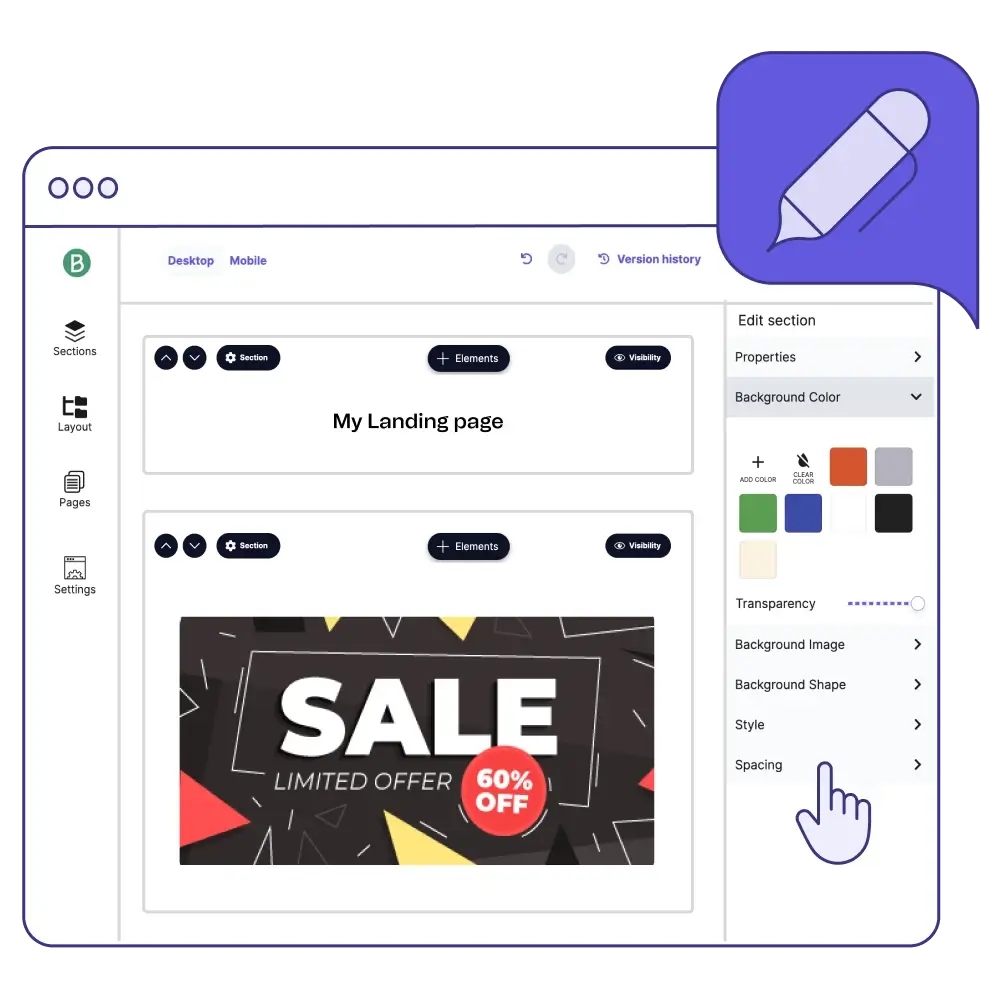
Adding Signups Across Key Touchpoints
Your potential subscriber could be checking out your website, talking to your support team, or scrolling through your footer. Every one of these is a chance to capture intent.
Add email opt-ins at multiple high-traffic moments across the customer journey:
- Checkout opt-in (pre-checked): One of the most overlooked but highest-converting signup points. They are already buying; why not hear from you again?
- Footer signup: A standard placement, but still effective when paired with an incentive (“Get 10% off your next order”).
- Thank-you page: It is a great spot to ask customers to subscribe for shipping updates, restocks, or loyalty rewards.
- Email signature: Add a signup link in all team email footers, especially for customer service or sales.
- Live chat widget: Include an email field so interested shoppers can stay updated even if they leave the chat.
- Order confirmation emails: Use your post-purchase flows to encourage non-subscribed customers to opt in.
Sowbagya has often guided PushOwl and Brevo clients to promote email sign-up incentives on social media pages, such as their Instagram bio, which then redirects them to a landing page.
Using QR Codes for Offline Email List Building
QR codes bridge the gap between offline and online. When scanned, they can direct shoppers straight to a mobile-optimized landing page or signup form.
Here’s where to place QR codes:
- Product packaging: They are bound to spot it while unboxing, so why not add the QR code with an incentive for a discount on the next order?
- Flyers and thank-you cards: You can place a QR code for a rewards program on a flyer
- In-store displays or event booths: Invite visitors to join your newsletter for exclusive drops or early access
- Receipts: Great for asking for a review in exchange for points or free samples
Which Email List Building Strategies No Longer Work in 2025?
Email marketing strategies have evolved through many “hacks” over the past few years. Here are some often suggested list-building tricks that will not work for your Shopify store:
Buying Email Lists
Buying email lists may seem like a shortcut to quick growth, but they’re almost always filled with cold, uninterested, or downright fake contacts. The result? Low open rates, high unsubscribe rates, and worse, your email sender reputation takes a hit. That means your real emails could start landing in spam, even for subscribers who want to hear from you.
Another reason why you should not be buying email marketing lists is that email platforms (including Shopify apps and ESPs) are getting stricter about list quality. Many can detect list imports with suspicious origins and may flag or freeze your accounts.
Adding Irrelevant CTAs
Not every visitor lands on your site for the same reason. So why should they all see the same call to action?
Generic CTAs like “Sign up for updates” or “Join our newsletter” don’t tell people what they are getting, or why they should care. Worse, aggressive pop-ups pushing a discount the second someone lands on your homepage often come across as pushy, especially if the user hasn’t even browsed yet.
In 2025, high-performing Shopify brands are replacing bland, one-size-fits-all CTAs with specific, contextual ones. Think:
- “Get early access to our winter collection” on a seasonal category page
- “Notify me when this size is back” on product pages
- “Reveal 10% off your first order” with a scroll-triggered pop-up
A clickworthy CTA that matches the visitor’s intent, the better your chances of converting that visit into a signup, and eventually a sale.
Not Making Email Signup Forms Mobile-Compatible
Over 70% of your store’s traffic likely comes from mobile. But if your email signup forms aren’t optimized for smaller screens (i.e., they are slow-loading, hard to close, or clunky to fill), you are leaking signups without even realizing it.
Make your email signup forms and pop-ups mobile first by including:
- Fewer fields (just email, maybe name)
- Tap-friendly buttons and large text
- Pre-checked opt-ins at mobile checkout
- Light design that loads fast
Conducting Giveaways Without a Follow-Up Opt-In
Giveaways can pad your email list with subscribers who may not even recall your brand's name; they just signed up for a gift. You need to do giveaways the right way.
In relation to the one-time giveaways, Hailey Rodaer, the Marketing Director at Engrave Ink, cautions marketers about the long-term detriment associated with giveaways that increase numbers in the short run. Here’s how her brand tested it, and her solution:
“We experimented to test this [giveaway, which was a book] in 30 days, and 41 percent of the new subscribers never opened another email. That book was useless in terms of retention and income. We, instead, developed a two-question opt-in pop-up that allowed our customers to select the type of stories they prefer to read or the products they are interested in. It gained an increment of 3 to 5 subscribers daily, but 87 percent of them remain active 6 months after.”
So if you are holding giveaways, remember that the intent of the subscribers is only to obtain the free resource, and not engage with your brand in the long term. If they are genuinely interested, they will opt in when you ask for consent again.
Low intent = low engagement; so don’t keep holding giveaways without a follow-up opt-in process.
How To Grow Your Email List Over Time
Using the basic tactics described in the previous section, you can build a sizable list from scratch. Now your next goal should be to grow it over time. Following are some strategies you can use to bump up the number of (good quality) contacts on your email list:
Run Seasonal Campaigns Based on Lead Generation
Holiday seasons are not just high-traffic months for your website, but also golden opportunities to grow your email list for your marketing campaigns. Use moments like Christmas, Black Friday, Valentine's Day, or your brand’s anniversary to run limited-time campaigns that reward signups with early access, exclusive previews, or gift guides.
Gated content is a smart way to trade value for signup, especially when it's something your target shopper actually wants. Instead of pushing generic discounts, offer exclusive access to content that feels personalized or premium.
Examples that work:
- Holiday Gift Guides gated behind email signup
- Early access to sales through inbox updates
- Sneak peeks for those who sign up
- Personalized lookbooks for subscribers who fill in their email and take a quiz
These campaigns naturally attract motivated, high-intent subscribers and give you a chance to start the relationship with real value, not a generic pop-up.
Use Your Subscribers As Your Marketers With Referral Programs
Referral-based email list-building strategies work especially well when there’s a clear reward. Create email capture campaigns where existing subscribers get perks for every friend they bring in. Think: early access, discount tiers, or exclusive drops for top referrers.
The key is to make the offer simple to understand and easy to share. And because this taps into trust-based word of mouth, the leads you collect tend to be higher quality and more engaged than cold traffic.
Collaborate With Non-Competing Brands
Partnering with non-competing, like-minded brands lets you tap into a whole new audience without starting from scratch.
Here’s how it works: Two or more brands pool together products for a themed giveaway, like a “Winter Essentials Kit” or “Pet Insurance along with a pet collar,” and promote a joint landing page where participants enter by submitting their email. Each brand walks away with a vetted list of new subscribers who already align with their customer profile.
This tactic is especially effective for Shopify stores in niches like wellness, fashion, home, or pet care. Bonus if you promote the giveaway across push notifications, pop-ups, and socials with a clear CTA.
Just make sure all participating brands agree on the list-sharing terms and notify subscribers upfront. No one likes a surprise in their inbox.
Pro-tip: Kristi Soomer, the founder of Encircled, a DTC brand, recommends this extra step before adding giveaway entrants to your main list: “I always recommend putting them through an opt-in flow to educate on your brand, and get them to consent again to receive emails so you can add healthy and engaged emails to your list.” Why? You don’t want to bloat your email list with people who signed up just for the giveaway and otherwise don’t intend to engage with your brand.
Tag Source of Subscribers
Knowing where your subscribers came from, whether it’s a homepage pop-up, quiz, QR code at a pop-up stall, or Instagram swipe-up, helps you double down on what’s actually working. Tag new signups based on their acquisition source using your email platform or Shopify integrations.
Over time, you will see which channels bring in high-intent leads vs. casual browsers. You will be able to optimize both your targeting and messaging. For example, tracking the source of subscribers may help you conclude that sending product-focused flows to quiz leads and nurturing storytelling content to social followers brings the highest ROI
Give Long-Term Value
Don’t stop giving value just because you have obtained a customer’s email address. You still should not be focusing on selling in every email to them. Instead, keep subscribers engaged with valuable, relevant content over time, like how-to guides, curated product picks, exclusive tips, or loyalty perks. The more ongoing value you deliver, the more likely they are to stay subscribed, buy again, and share your brand with others.
How To Clean Your Email List
While growing a garden, you need to clean out the weeds. Email lists are no different. The “weeds” in your email list can be email contacts from:
- Abandoned accounts
- Customers who no longer fall within your geographic locations
- Leads who do not need your products anymore
- Subscribers who had signed up just for the sake of that one discount or giveaway and are otherwise not interested in your product
Therefore, as part of your email list-building strategy, ensure you are executing frequent cleanups by:
Step 1: Set Up Shopify-Native Filters/Parameters With Email List Building Tools
Set filters within your email list-building tools to identify those who are inactive, whose emails are bouncing, or are otherwise low-engagement. How you want to define a low-engagement or inactive subscriber depends on your overall marketing goals and product niche.
Sowbagya advises our Shopify clients with the following: “If a contact hasn't engaged with your brand in the last 1 year, they might have already forgotten about you and will not likely engage with your future campaigns as well, so it's better not to reach out to them.”
Harsh? Maybe. But it protects your email list.
Step 2: Identify Hard Bounces + Unsubscribes, and Role-Based Emails
Hard bounces (invalid addresses), unsubscribes, and role-based emails like “info@”, “support@”, or “admin@” don’t belong on your email list. They don’t engage, they skew your metrics, and they signal to inbox providers that you are not cleaning house, thus hurting your sender reputation.
Set up automatic suppression rules to filter these out during import and after every campaign. With PushOwl and Brevo, you can build segments that exclude such addresses from receiving your campaigns.
Step 3: Use Re-Engagement Automations on Inactive Subscribers
Not every inactive subscriber needs to be scrubbed right away. Some of them are still a good fit for your brand. They just need the right nudge.
That’s where re-engagement automations come in. A well-timed win-back sequence can help you reconnect with subscribers who haven’t opened or clicked in 60–90 days but are still a part of your core audience.
These automations can include:
- Reminder of missed perks, such as an email with the subject line: “You have unused points, and they are about to expire!”
- Last-chance discount, with an email mentioning that the discount expires within 24 hours.
- Survey-based outreach to understand what has changed. Maybe an inactive subscriber is interested in your brand as a whole, but your emails are not valuable to them.
- Product-driven updates, to show them social proof or identify best-sellers and new products since they last engaged with your brand.
PushOwl and Brevo make it easy to build these automations and trigger based on engagement activity or customer tags inside Shopify. Just don’t overdo it. If they don’t engage after 3–4 emails, it is better to suppress them than risk another spam complaint.
Step 4: Address Spam Complaints
Monitor your spam complaint rate (most ESPs show this post-campaign) and look for patterns: Did complaints spike after a promotional blast? Are specific segments more sensitive to frequency?
If you are seeing consistent issues, scale back. Send fewer emails, personalize more, and allow subscribers to choose how often they hear from you.
Step 5: Perform Regular Email List Cleanups
Removing dormant subscribers is not a one-time job. Once a quarter, repeat the above steps to remove unresponsive subscribers. Imagine not having to send a single email just to see a spike in your engagement metrics? That’s what removing deactivated subscribers will do with each cleanup exercise. Also, your sender reputation will thank you.
So follow steps 1-4 regularly to keep your email list updated.
Best Practices for Email Hygiene
Other than regular email clean-ups, you need to maintain overall email list hygiene. Your open rates are not the only thing at stake; your email deliverability will take a hit, your emails will trigger spam filters, and then even the customers who want email communication from you won’t receive it, and they will disengage as well.
Here’s how you can maintain a healthy email list for your marketing campaigns:
Use Confirmed Opt-In Wherever Possible
Also known as double opt-in, this method asks subscribers to confirm their email address via a follow-up email before they’re added to your list.
While it may slightly reduce the total number of signups, the leads you do get are more engaged, less likely to mark emails as spam, and less prone to typos or bot activity. For brands prioritizing long-term deliverability over vanity metrics, confirmed opt-ins are a better solution.
Here’s an example by The Honest Kitchen, a pet food brand:
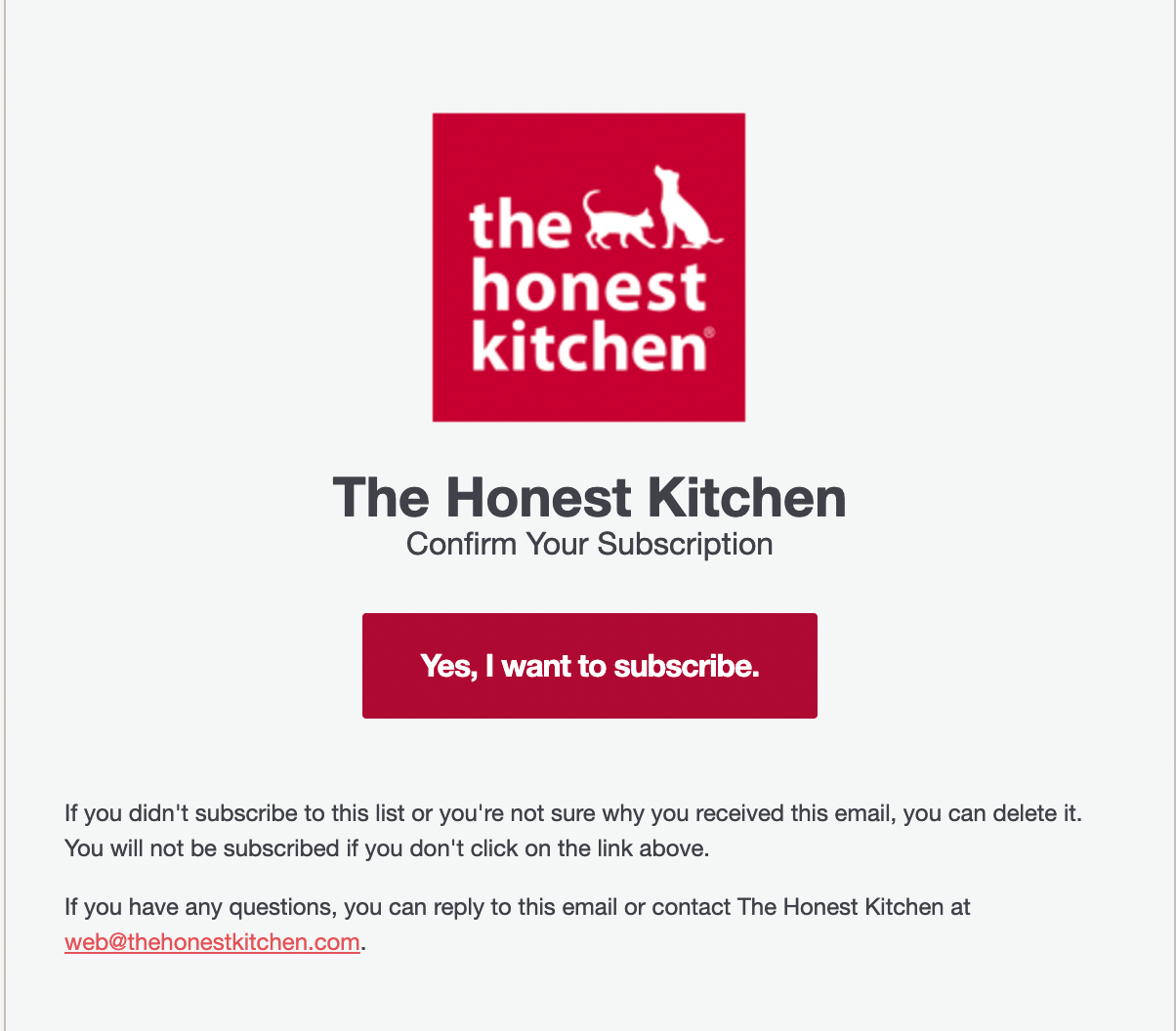
Always Provide an Unsubscribe Option
Making it easy for people to leave your list might seem counterintuitive, but it’s essential for list health and compliance.
Every email you send should include a visible, one-click unsubscribe link. If users can’t find a way to opt out, they will mark your emails as spam, which directly hurts your sender reputation and inbox placement.
A clear unsubscribe option keeps your list full of people who want to hear from you, and aren’t they the ones to whom you want to send marketing campaigns you spent a lot of effort (and money) on?
Brooklinen, like most e-commerce brands, adds the unsubscribe button to its email footers:
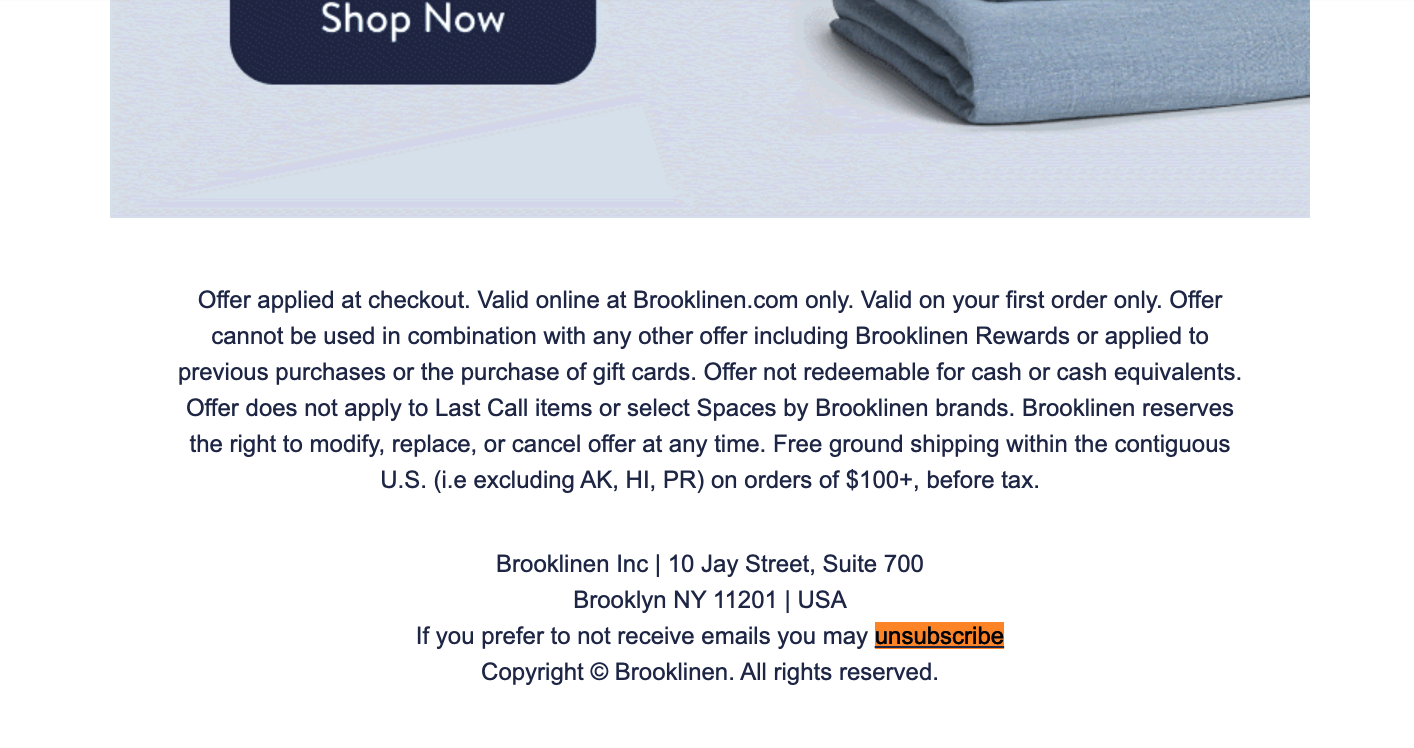
The word unsubscribe links to a form that confirms that you want to be taken off the email list.
Follow GDPR/CCPA Rules
If you are collecting emails from EU or California-based visitors, compliance isn't optional. Use your email platform’s built-in features (PushOwl and Brevo both support this) to capture and store consent records properly. Knowing that you follow regulations like GDPR and CCPA also helps build trust with your audience. Customers are now more conscious than ever about who they share their data with, so you need to ensure your email communication doesn’t come across as suspicious.
Avoid Misleading Subject Lines
Your email subject lines need to be clickworthy, but not dishonest. If they overpromise or misrepresent what your email contains, that’s a fast track to the spam folder. So, for example, if you are promising them a discount, give them that. Maintaining your customer’s interest can be that simple sometimes.
A compelling subject line is interesting, yes, but also accurate and relevant.
Match User Intent
Your customer’s intent is evident in their browsing and buying behavior. Try to fulfill their intent. That could mean sending personalized emails based on where the user is in the buying journey and sending them the correct email automations, or just knowing that they are currently more interested in long-term savings (through loyalty programs) rather than short-term discounts (or vice-versa), and therefore sending them the right offer as a tailored email.
If your customer is just learning about your brand, a welcome email with your brand’s story will pique their interest. If they are well into the buying process, they may not be that interested in knowing the anecdote behind your brand’s name. They would rather have you send them tips, tutorials, or personalized recommendations.
When you meet your customer where they are, they will never want to leave your email list, and will therefore keep engaging, buying, and not marking your emails as spam!
How Do You Automate And Nurture Your Email Campaigns?
Personalized emails do not need to be sent manually. You can focus on setting up high-value email flows that are triggered by user behavior. Three must-have flows are:
Welcome Series
A solid welcome series should:
- Greet them warmly and thank them for joining
- Share your brand story and what makes you different
- Offer a discount or incentive (if promised at signup)
- Encourage the first action, such as browsing a collection or checking out a guide.
Kristi from Encircled also suggests including quizzes: “They're fun and people love to learn about themselves and something new. This can be an excellent, low lift list-building strategy that doesn't give away margin.”
The following welcome email by Vosges Haut-Chocolat, a chocolaterie store, mentions the discount code that was promised in the email signup form:

Abandoned Cart Recovery Flow
Even the most interested shoppers get distracted, and your cart recovery emails bring them back.
Use a 2–3 step sequence with:
- A gentle reminder of what they left behind
- An image of the product to rekindle desire
- Social proof or reviews to build trust
- A time-sensitive incentive, like a discount or a free bonus
These flows work best when spaced out and personalized with names and product thumbnails.
Below is one of the abandoned cart recovery emails by Pawsafe, a pet supplement brand:
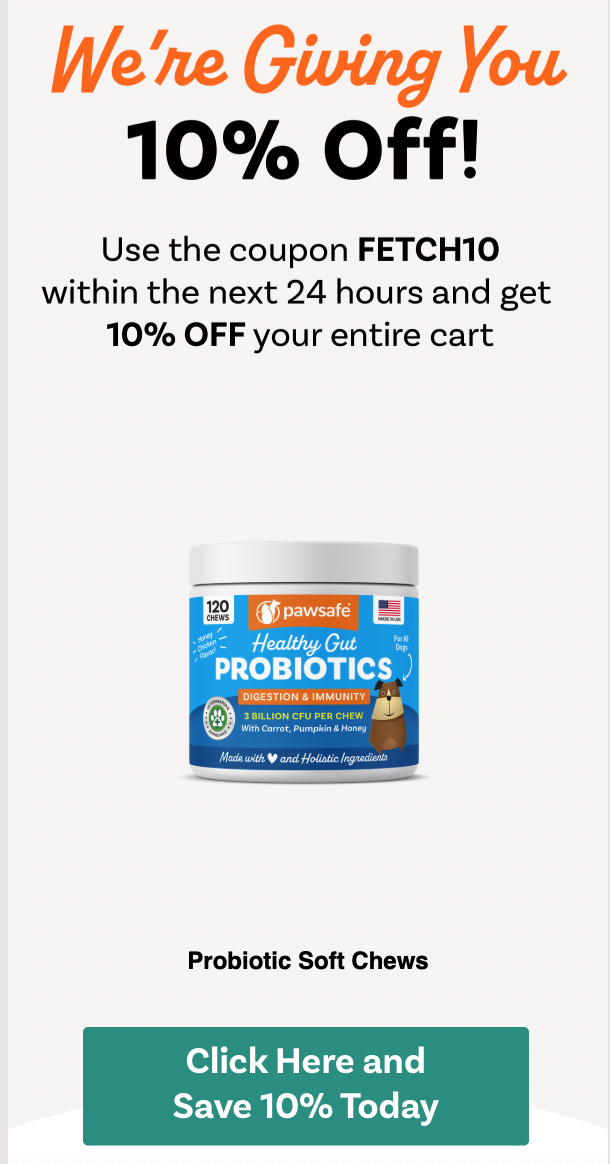
It contains a time-bound discount along with the product image to remind the customer of the item they added to the cart.
Pro-tip: Use PushOwl and Brevo’s welcome email examples and ACR email templates to make that first impression stand out.
Post-Purchase Flows
Use post-purchase flows to:
- Thank the customer and set delivery expectations
- Recommend complementary products
- Ask for a review or UGC
- Invite them to your loyalty program or next campaign
- Gather feedback on their experience
Pro-tip: Use PushOwl’s embeddable forms to collect email addresses from users through web push notifications and blogs.
Mistakes To Avoid While Building Your Email List
We have already covered these above, but here’s a handy checklist:
Sowbagya also advises our Shopify clients against reaching out to the entire list. Why?
“In most cases, it could end up harming their domain reputation if they do this, especially if the merchant has been collecting contacts for so long and hasn't cleaned up their contact list regularly while using their previous ESP. This would mean that they have a lot of invalid/inactive email addresses that could now have become spam traps or hard bounce when emailed. And when this happens, it signals to the mail service providers that the client has a bad list or has bad sending practices.”
Some other mistakes include:
Sending The Same Email to Everyone on Your Email List
Not everyone on your list is at the same stage of their journey.
Some just signed up.
Others haven’t bought in months.
Many are bargain-hunters, a few are VIPs.
Sending them all the same email with no context or segmentation dilutes performance. Instead, break down your list by lifecycle stage, product interest, or purchase behavior to tailor your message and boost relevance.
Not A/B Testing
Pop-ups that fire too soon, ask too much, or look like they belong in 2012 get dismissed immediately. But most brands still stick to default settings without testing. Something as small as changing a headline from “Sign Up for 10% Off” to “Unlock 10% Off Your First Order” can increase conversions. Try A/B testing button colors, form placement, or exit-intent vs. time-delayed triggers. The right combination often varies by device, channel, and traffic source.
Focusing on quantity over quality
An email list with 10,000 deadweight contacts will do more than just ramp up your email marketing costs.
Side note: PushOwl and Brevo do volume-based pricing, so even if you send only 5000 emails a month with an email list of 10,000, you pay for the emails you sent, not for the contacts on your list.
A bloated email list will dilute your metrics, and that will affect how you approach your marketing campaigns.
Vet new contacts, do regular list-cleaning, and maintain list hygiene. Remember, the success of your email list lies in the engagement you get through it, not its size.
Sending Emails at the Wrong Time
If you send emails to your customer when they are in their no-screens time of the day, that’s the quickest way to get marked as spam. If you want to keep your email list engaged, ensure that each email subscriber is receiving marketing emails at a time when their intent to convert (or at least read the emails) is high. Depending on your target audience, this could mean post-business hours or after-school hours if your target audience is high school students.
Or it could mean setting up intent-based automations, such as a discount email when a customer adds something to the cart, so that you are targeting them with the incentive when they are already in the mood to purchase.
When you send any email, no matter how persuasive and valuable it is, ensure it reaches the customer at a relevant time. You can achieve the right timing based on email segments, e-commerce automations, and also tailor the send time for each subscriber using our smart send tool. That’s a part of personalization that goes beyond email copy!
Using Weak or Irrelevant Incentives
If you are giving your customers sufficient incentives to engage with your brand, but it’s not working, it’s probably because of two reasons. The incentive is weak; that is, it’s just not appealing enough to nudge them to convert. A weak incentive could be a low-effort discount (5% discount in this economy? Pass!) or a reward with too high a threshold, such as free shipping on average order value of $999 when your average product cost is $50. Other weak incentives include vague loyalty program perks, new product launches that no one asked for, or bonuses and gifts that you oversell in your marketing copy.
An irrelevant incentive could be a strong incentive that does not interest a particular subscriber—for example, giving a bonus men’s grooming sample kit as an incentive to an email subscriber who has only ever bought women’s grooming products. It’s a strong incentive; just not matched to that subscriber’s needs. Other examples include giving a time-sensitive discount right after a high-ticket purchase, or sending VIP program emails to someone who hasn’t engaged in months.
Use Your Email List As Your Marketing Weapon
Building an email list is about capturing intent. PushOwl and Brevo help you capture intent not with a long email list, but with the right one. From timing-logic pop-ups and embeddable forms to welcome automations and list-cleaning workflows, you get a full-stack system for collecting, nurturing, and converting your subscribers. Built for Shopify merchants, ready for 2025.

